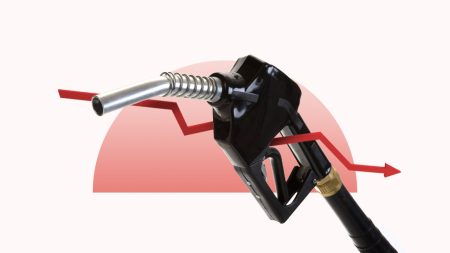Image by GettyImages; illustration by Bankrate
There are two main ways to use tax deductions to lower your tax bill: either claim the standard deduction or itemize your deductions, which means add up a list of your qualified expenses.
Then you subtract t hat amount — either the standard deduction or your total itemized deductions — from your adjusted gross income. The lower your income, the lower your tax bill.
While the vast majority of taxpayers now take the standard deduction, for some taxpayers it may make more sense to itemize deductions.
How to decide: standard vs. itemized deduction
- Standard deduction: The standard deduction is a set dollar amount, determined by the IRS. The dollar amount is different for each filing status (single filers, married filing jointly, head of household, etc.), and is higher for visually impaired taxpayers and those who are age 65 or older. The IRS usually increases the amounts each year to account for inflation. Almost all taxpayers are eligible to claim the standard deduction.
- Itemized deductions: Itemizing your deductions lets you deduct certain eligible costs, such as medical expenses, mortgage interest, property taxes and charitable contributions. You must fill out Schedule A to itemize your deductions, and you should keep your receipts and records in case you get audited.
Tax tip
The key to reducing your tax bill as much as possible is to choose whichever deduction — standard or itemized — is the biggest dollar amount.
You can’t take both — you must choose between the two. And because the standard deduction was nearly doubled and some itemized deductions were limited as part of the Tax Cuts and Jobs Act of 2017, and then those changes were largely made permanent by the One Big Beautiful Bill Act, which was signed into law in July — it’s much harder these days for most taxpayers to compile a list of qualified itemized deductions that adds up to more than the standard deduction.
In fact, more than 90 percent of taxpayers took the standard deduction in 2022, according to the most recent IRS data.
Above-the-line deductions
Keep in mind that in addition to the standard deduction and itemized deductions, there are also a handful of “above the line” deductions that you can claim whether you itemize or claim the standard deduction. These above-the-line deductions include:
How itemized deductions work
To itemize your deductions, you must enter your qualified expenses onto Schedule A, and then the total of your itemized deductions from Schedule A is entered on line 12 of Form 1040.
If you choose to itemize, keep in mind that many deductions have limitations, such that not every dollar of your expenses can be subtracted from your income. The instructions for Schedule A, which is the form you use to claim itemized deductions, offers insight into these rules.
Here are some examples:
Pros of itemized deductions
Itemizing may allow you to shield more income from taxes and lower your overall tax bill — if your itemized deductions add up to more than the standard deduction amount.
Cons of itemized deductions
- Itemizing deductions requires more paperwork, filling out Form 1040’s Schedule A, and keeping records of expenditures in case you get audited.
- While there are plenty of opportunities to itemize, each category has its own rules and limitations on how much can be deducted.
How the standard deduction works
The standard deduction is a flat dollar amount determined by the IRS. Claiming the standard deduction entails simply entering that dollar amount on line 12 of Form 1040. In other words, it requires a lot less paperwork and record-keeping than itemizing does. And for many taxpayers, the standard deduction is higher than your itemized deduction would be — which means you’ll save more on your taxes.
Your standard deduction amount depends on your filing status.
Standard deduction amounts for 2024 and 2025
| Filing status | 2024 Standard deduction amount |
2025 Standard deduction amount |
|---|---|---|
| Single filers or married couples filing separately | $14,600 | $15,750 |
| Head of household | $21,900 | $23,625 |
| Married couples filing jointly | $29,200 | $31,500 |
Taxpayers who are over the age of 65 or visually impaired qualify for extra standard deduction amounts by checking a couple of extra boxes on their tax return.
New tax break
There’s a new temporary provision in the big tax law, for taxpayers who are 65 or older: A $6,000 bonus tax deduction, on top of the regular standard deduction and the extra standard deduction amounts already in place for older taxpayers. This new tax break is available whether you itemize or claim the standard deduction. But keep in mind that it’s temporary, in effect only from 2025 through 2028, and there are income limits. Your modified adjusted gross income can’t exceed $75,000 for single filers and $150,000 for married-filing-jointly filers.
Remember, be sure to use the deduction method that gives you the biggest tax benefit. That is, it makes the most financial sense to claim the bigger number — your standard deduction or your total itemized deductions — because that number will reduce your taxable income the most, thus trimming your tax bill as much as possible.
So, if your deductible expenses add up to less than your standard deduction, you can throw away all those receipts you stashed in the hope of turning them into tax breaks.
Pros of claiming the standard deduction
- The vast majority of taxpayers are eligible to claim the standard deduction.
- You’ll save a lot of time by not having to fill out Schedule A for itemized deductions.
- If you use a professional tax preparer, you could save an average of more than $100 on fees by using the standard deduction. Similarly, some tax software providers offer lower-cost products for people who claim the standard deduction rather than itemizing.
Cons of claiming the standard deduction
- You may leave money on the table by using the standard deduction rather than itemizing. It may be worth analyzing your expenses each year to make sure you pick the right option.
- There may be some situations where you can’t claim the standard deduction, such as if you’re married filing separately and your spouse itemizes their deductions.
Why we ask for feedback
Your feedback helps us improve our content and services. It takes less than a minute to
complete.
Your responses are anonymous and will only be used for improving our website.
Help us improve our content
Read the full article here












